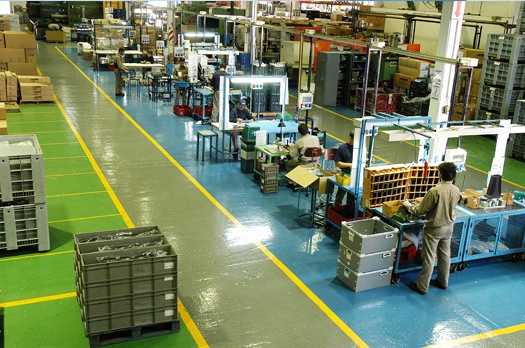NPDES - Construction Stormwater Compliance
- RSB Environmental will aid you in your understanding of NPDES stormwater compliance and stormwater solutions.
- Working closely with construction site operators to make sure they have the proper stormwater controls in place.
- We can help Nationwide client's with Stormwater Pollution Prevention Plan (SWPPP) as fast as in 3 business days.
- Our company emphasize on customer service and focuses on great delivery with our Construction Stormwater Compliance projects.
Request a free custom quote or call 1-833-910-2535














Testimonial
WHAT OUR RECENT CLIENTS SAY ABOUT US
Sachin and his team at RSB Environmental are very helpful with our company’s environmental needs. Always courteous and informative in regards to our questions.
RSB Environmental is a great company, they are easy to work with and handle all our Environmental needs in a friendly professional way. I would recommend RSB Environmental for all your company’s environmental needs.
CONSTRUCTION STORMWATER COMPLIANCE
In general, the NPDES (National Pollution Discharge Elimination System) stormwater program requires permit coverage for discharges from construction activities that disturb one or more acres, and discharges from smaller sites that are part of a larger common plan of development or sale. Depending on the location of the construction site, either the state or EPA will administer the permit. See the webpage for Authorization Status for EPA’s Construction and Industrial Stormwater Programs to find out whether EPA or your state is the permitting authority for construction activities. You can also use the “Do I Need a Permit?” flow chart to help determine if and from whom you need to get NPDES permit coverage for your construction activities.
Navigating NPDES Construction Stormwater Compliance
In the context of construction, NPDES Construction Stormwater Compliance is paramount for maintaining the ecological integrity of surrounding water bodies. It is mandatory for construction sites disturbing one acre or more of land, or smaller sites involved in a larger common plan of development or sale. This compliance requires an appropriate Stormwater Pollution Prevention Plan (SWPPP) in place, ensuring the minimization of polluted stormwater runoff from the construction site. Essential components include adequate erosion and sediment controls, as well as a host of Best Management Practices (BMPs). Obtaining permit coverage, routinely inspecting the construction site, maintaining and updating the SWPPP, and submitting a Notice of Termination upon project completion, constitute the compliance process. Moreover, site-specific factors play a significant role in shaping the SWPPP, demanding diligent oversight and adaptive strategies. The criticality of NPDES compliance cannot be overstated, considering its role in protecting water quality and overall environmental health.
Stormwater General Permit for Construction Activities Nationwide:
- Construction projects that disturb one or more acres are subject to three major requirements:
- Submit a permit application (or Notice of Intent) prior to the start of construction.
- Develop and fully implement an Stormwater Pollution Prevention Plan (SWPPP ) prior to initiating any on-site construction activity. This SWPPP specifies the measures that will be put in place to prevent and/or control stormwater pollution.
- Submit a Notice of Termination when the following criteria have been met: final stabilization of the site has been achieved as defined in the NPDES stormwater General Permit, all temporary erosion and sediment controls have been removed, and no potential remains for construction-related sediment discharge to surface waters.
RSB Environmental can help you obtain your NPDES Construction General Permit for construction site, perform routine inspections, and create Stormwater Pollution Prevention Plans (SWPPPs). We will identify cost-effective BMPs, and engineer short and long-term stormwater management systems including drainage controls, piping, treatment facilities, erosion controls and more.
DO YOU NEED A STORMWATER PERMIT COVERAGE FOR CONSTRUCTION ACTIVITIES?
How do you get a NPDES Stormwater Permit Coverage for your construction Site?
1- Develop a stormwater pollution prevention plan (SWPPP)
The SWPPP is a plan for how you will control stormwater runoff from your construction site. It is broader and more complicated than a typical erosion and sediment control plan. The SWPPP must be completed before you file a NOI to obtain stormwater permit coverage. You don’t have to submit the SWPPP with your NOI to obtain permit coverage, but the plan must be available on-site for review during inspection. Because every site is unique, every SWPPP is unique. The SWPPP needs to be updated as your work progresses.
Basic SWPPP Principles
- Divert stormwater away from disturbed or exposed areas of the construction site.
- Install BMPs to control erosion and sediment and manage stormwater.
- Inspect the site regularly and properly maintain BMPs, especially after rainstorms.
- Revise the SWPPP as site conditions change during construction and improve the SWPPP if BMPs are not effectively controlling erosion and sediment.
- Keep the construction site clean by keeping storage bins covered, and sweeping up excess sediment on roads and other impervious surfaces.

2- File a Notice of Intent (NOI)
The Notice of Intent (NOI) lets the state or EPA know that you are filing for a stormwater permit coverage for construction site. It is also your certification that you have read, understood, and implemented the requirements of the construction stormwater permit. Your completed NOI should be posted at the construction site in a place accessible to the public.
3- Implement all BMPs outlined in your SWPPP
All BMPs must be inspected and maintained regularly. Inspections are required either (1) at least once every 7 days and within 24 hours of the end of a rain event of 1/2-inch or more.
4- File a Notice of Termination
The Notice of termination (NOT) needs to be submitted when construction activity is finished.
RSB Environmental can help with:

- Construction Stormwater Compliance
- Stormwater Pollution Prevention Plan (SWPPP) – 3 business days turnaround
- NPDES NOI Permit- 24 hr turnaround
- Best Management Practices Implementation
- Area Inlet Protection
- Curb Inlet Protection
- Chain Link Fencing
- Sign posting
- Our environmental specialists can help you understand whether a permit is required, and what type of stormwater permit you need.
Our Service Areas
RSB has conducts Construction Stormwater Compliance projects nationwide. Please feel free to call us at 1-833-910-2535 or email at info@rsbenv.com to get a site specific price for your construction sites. We have strong relationships with the regulating communities that will keep our clients in compliance and free of any violation!
Additional Stormwater Information
Stormwater Compliance
Frequently Asked Questions
Who requires NPDES Construction General Permit Coverage?
Construction site operators, general contractors, the person who has operational control over the construction activities, requires NPDES General Permit Coverage for their construction projects.
Why stormwater runoff from construction sites should be managed?
Stormwater runoff from construction sites can cause significant harm to our rivers, lakes and coastal waters, so stormwater runoff must be manage by the NPDES Construction General Permit issued by EPA (Environmental Protections Agency)
What is the NPDES Construction Stormwater Compliance?
NPDES Construction Stormwater Compliance is a regulatory requirement for construction projects disturbing an acre or more of land, ensuring the minimization of polluted stormwater runoff from the site.
Why is NPDES Construction Stormwater Compliance important?
It’s essential to maintain the health of nearby water bodies by preventing the discharge of harmful pollutants from construction activities into these waters.
What is a Stormwater Pollution Prevention Plan (SWPPP)?
An SWPPP is a strategic plan outlining measures to control stormwater runoff from a construction site, including erosion and sediment controls and other Best Management Practices (BMPs).
Our Registrations and Certifications







Industrial Hygiene

Engineering

Safety

Environmental Compliance




